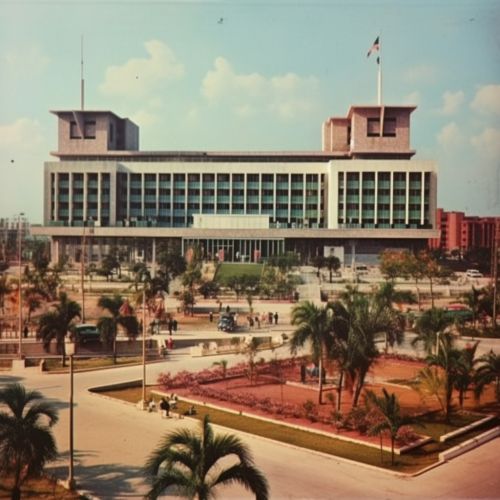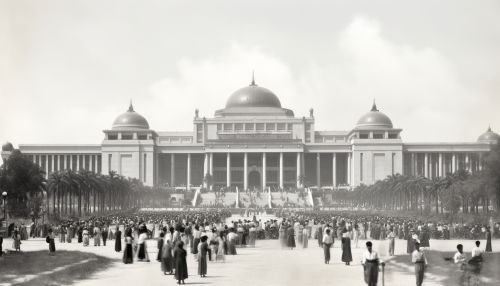Khmer Republic
Overview
The Khmer Republic was a right-wing pro-United States military-led government that ruled Cambodia from 1970 until 1975. The republic was established in March 1970 after Prince Sihanouk was overthrown in a military coup led by Prime Minister General Lon Nol and Prince Sisowath Sirik Matak. The Khmer Republic's existence was marked by civil war, political instability, and the influence of major powers.
Background
In the late 1960s, Cambodia's Prince Sihanouk, increasingly wary of the war next door in Vietnam, attempted to steer a neutral course, but found this difficult with the belligerents, the United States and North Vietnam, both pressuring Cambodia. In March 1970, while Prince Sihanouk was out of the country, General Lon Nol initiated a coup and took control of the government, establishing the Khmer Republic.
Political Structure
The Khmer Republic was a military regime which was nominally led by Lon Nol as President and Cheng Heng as President of the Khmer National Assembly. The constitution of the Khmer Republic was promulgated on 9 October 1972, and was based on the French model, with a National Assembly and a Senate. The judiciary was independent of the executive branch, but the legislative branch had limited powers and the executive branch held significant power.
Foreign Relations
The Khmer Republic was recognized by many countries, and was a member of the UN. It was supported by the United States and its allies, while the PRC, the USSR, and North Vietnam supported the opposition Khmer Rouge.
Downfall
The Khmer Republic's existence was marked by civil war against the Khmer Rouge. The Republic's control was largely confined to cities, and the Khmer Rouge guerillas were gaining territory. The Republic was also plagued by corruption, inefficiency, and lack of support from the population. In 1975, the Khmer Rouge captured Phnom Penh, the capital of the Khmer Republic, effectively ending the Republic.
Legacy
The Khmer Republic's legacy is mixed. It is remembered as a period of intense fighting and destruction, but also as a time when Cambodia was a player on the international stage. The Khmer Republic was succeeded by the Khmer Rouge's Democratic Kampuchea, which led to the Cambodian Genocide.


